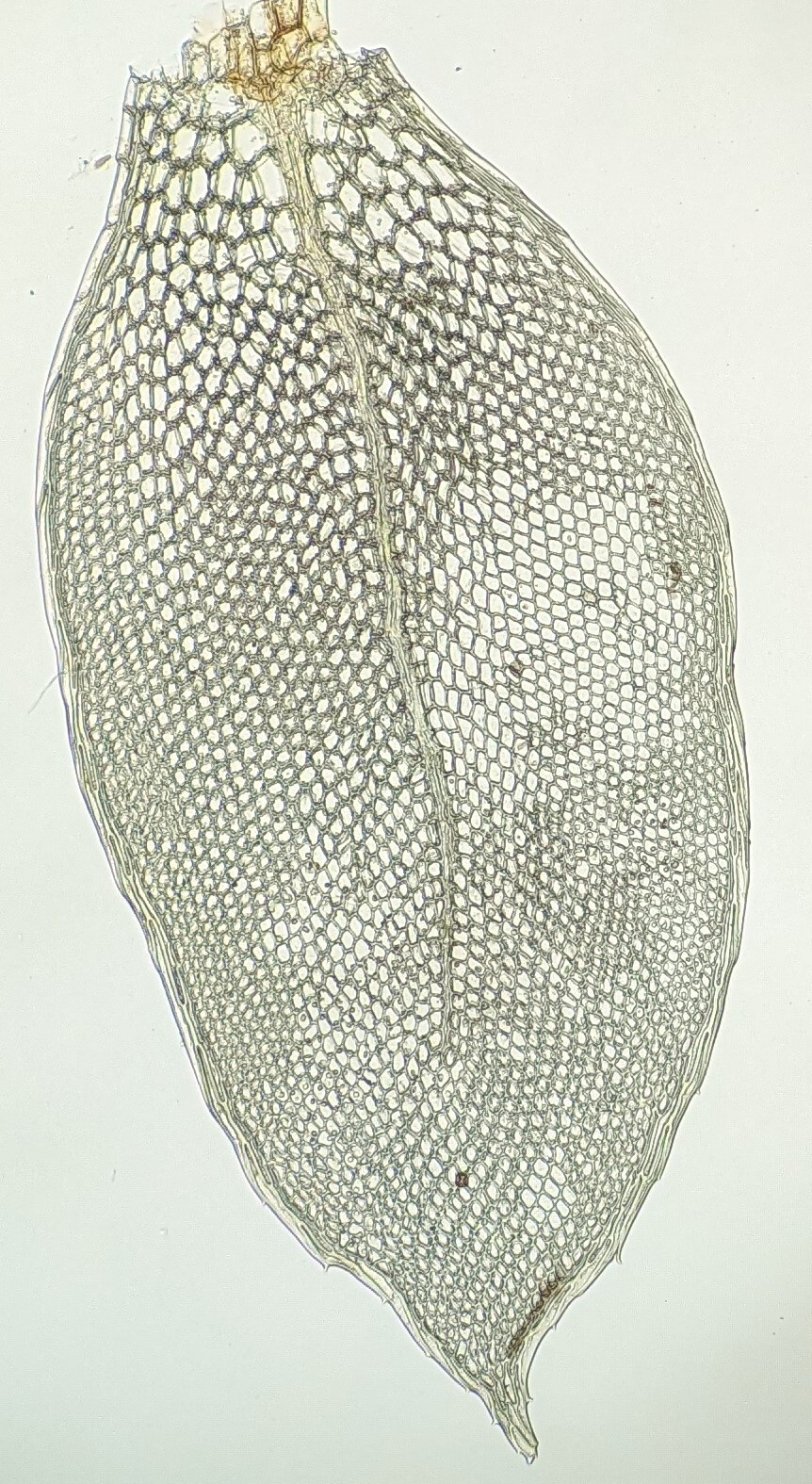Distichophyllum rotundifolium
(Hook.f. & Wilson) Müll.Hal. & Broth.Dioicous. Asexual propagules absent. Dense mats on soil, rocks and logs, yellow- or bright green. Stems 8–12 (–20) mm long, moderately and irregularly branched, red-brown, with scattered red-brown rhizoids toward base. Leaves complanate, strongly crisped to twisted when dry, ovate-orbicular, 0.7–1.2 mm long, 0.45–0.6 mm wide, plane; apices acute, with a short apiculus; costa extending for (50–) 65–75% of leaf length; margins distantly denticulate in apical half, rarely entire, plane, with 2–3 rows of narrower cells forming a distinct border; laminal cells in apical half away from margin hexagonal to irregularly hexagonal, 12–28 μm long, 5–20 μm wide, smooth, gradually transitioning into basal laminal cells; basal laminal cells away from margin oblong, 20–63 μm long, 7–30 μm wide, smooth; marginal cells linear, 95–185 μm long, 5–7.5 μm wide, smooth. Setae 5.8–12.5 mm long, red-brown, smooth, slightly twisted anticlockwise. Capsule inclined to pendent, oblong-cylindric, 0.8–1 mm long. Calyptra smooth or with erect hairs. Operculum rostrate from conic base, c. 0.5 mm long.
GGr, EGU, WPro, HSF, HNF, OtR, Strz, HFE. Also NSW and Tas. New Zealand and Chile. In higher rainfall areas (Grampians, Otways, Yarra Ranges, Strzelecki Range, Wilsons Promontory and East Gippsland) in wet-sclerophyll forest and rainforest.
 Spinning
SpinningStreimann, H. (1999). Taxonomic studies on Australian Hookeriaceae (Musci). 2. The genera Distichophyllum and Bryobrothera. Journal of the Hattori Botanical Laboratory 86: 89–119.


